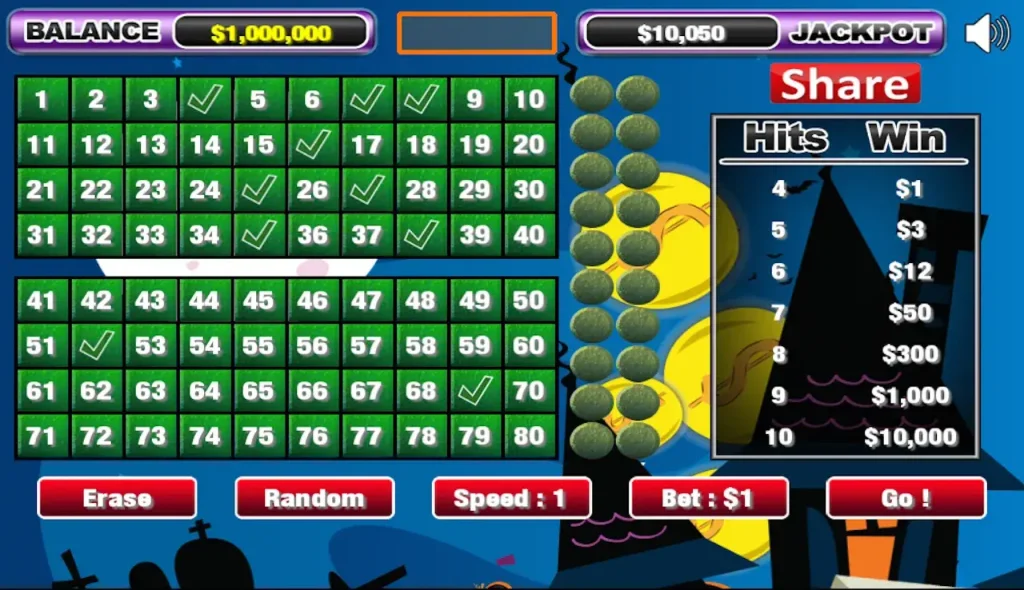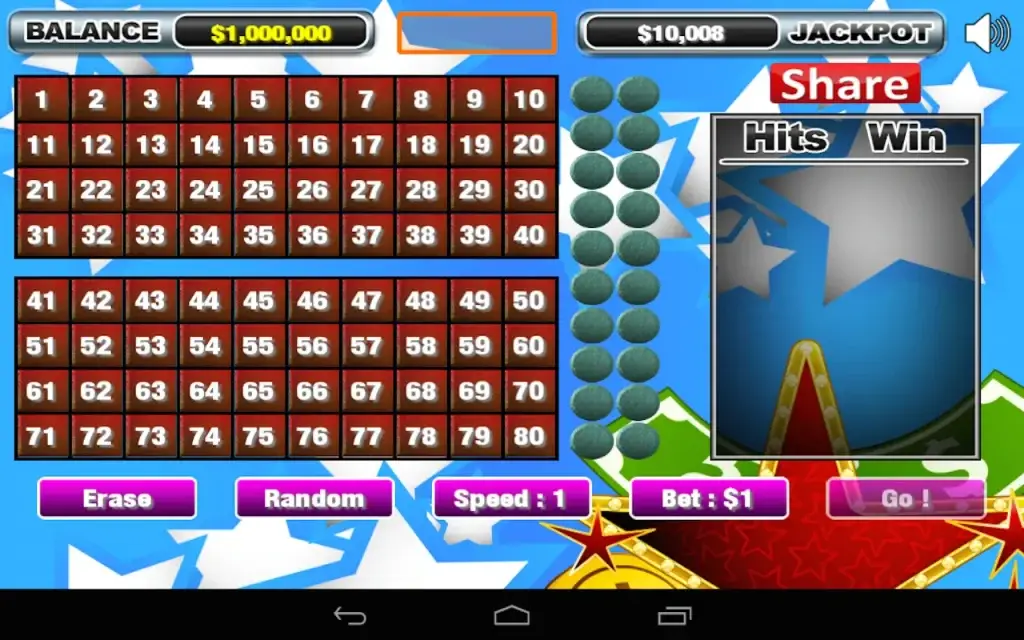The variety of terms in gambling can puzzle the beginner already at the start. Modern keno dictionary includes both traditional concepts that came from the classic lottery, and new definitions that appeared with the development of the online format. Understanding the professional terminology helps to learn the rules and peculiarities of the game process faster.
Fundamental terms and definitions
Basic concepts form the basis for learning the game mechanics:
- ‘Spot’ refers to each number marked by the player on the ticket.
- ‘Hit’ occurs when the number rolled matches the number marked on the coupon.
- ‘Fast Keno’ refers to an accelerated version of the game with minimal pauses between draws.
- The playing field traditionally contains 80 numbers, of which 20 are played in each round.
Features of the online format
Virtual versions of the game have implemented their own keno dictionary:
- automatic number selection allows you to fill in your ticket instantly;
- fast replay duplicates previous bets;
- multiplayer denotes a mode with other participants;
- turbo mode shortens the time between draws;
- autoplay starts a sequence of rounds.
Professional jargon of experienced players
 The longstanding practice of playing keno has spawned a special vocabulary among professionals:
The longstanding practice of playing keno has spawned a special vocabulary among professionals:
- ‘Favourites’ are numbers that the player regularly includes in the ticket.
- ‘Hot numbers’ are considered to be the most frequent in recent drawings.
- ‘Cold numbers,’ on the other hand, do not appear in the results for a long time.
- ‘Streak’ refers to a series of successful bets, while “downstroke” refers to a series of failures.
Abbreviations and acronyms
Online casinos often use special designations for quick communication:
RNG (Random Number Generator) – Random number generator that ensures the fairness of the draws;
RTP (Return to Player) – Return to Player percentage;
MP (Multi Player) – multiplayer mode with multiple users;
TB (Turbo) – accelerated version of the game with minimal pauses;
QP (Quick Pick) – function of automatic selection of numbers for a ticket.
Practical application of terminology
Understanding special terms from the dictionary greatly simplifies the process of playing keno:
- When the numbers that fall out match the numbers marked on the ticket, a ‘combination’ is formed.
- The size of the payout is determined by the ‘coefficient table’, where the multipliers for the different coincidences are indicated.
- ‘Instant Keno’ allows you to know the result immediately after selecting the numbers, without waiting for the general drawing.
Bonus features and special modes
The modern keno dictionary is constantly replenished with terms related to additional features of the game:
- ‘Multiplier’ increases the standard payout odds in certain rounds.
- ‘Bonus Balls’ adds extra numbers to the standard draw.
- ‘Progressive Jackpot‘ is formed from a portion of players’ bets and is played when a special combination falls out.
Features of number selection
When putting together a game sequence, experienced participants use different terms for selection strategies:
- ‘System Game’ suggests the use of mathematically based combinations.
- ‘Random selection’ relies on automatic determination of numbers.
- ‘Zone strategy’ focuses on numbers from specific sectors of the playing field.
Common Strategies
- Professional players have developed their own vocabulary to describe game approaches: ‘Conservative play’ involves selecting a small number of numbers with a high chance of matching.
- ‘Aggressive strategy’ focuses on maximising payouts with a lower probability of winning.
- ‘Mixed approach’ combines different tactics depending on the situation.
Typical mistakes of novice players
Misunderstanding of the basic terminology often leads to miscalculations in the gameplay. Beginners confuse ‘card’ with ‘ticket’, although these terms denote different aspects of the game ‘Card’ is used in offline versions, while ‘ticket’ is the standard term for the online format. It is also important to distinguish between ‘drawn’ and ‘marked’ numbers, as these are key terms for determining the outcome of a round.
Financial terminology in keno
The keno dictionary includes specific terms for monetary transactions:
- ‘Minimum bet’ defines the lower threshold for entering the game.
- ‘Progressive bet’ implies a gradual increase in the bet amount.
- ‘Bankroll management’ describes the system of game capital management.
- Special attention is paid to the concept of ‘maximum payout’, which defines the limit of possible winnings.
Special terminology for bonus rounds
Modern online platforms introduce additional game mechanics, enriching the keno dictionary with new terms:
- ‘Bonus round’ is activated under certain conditions and offers increased payout odds.
- ‘Accumulative multiplier’ increases with each consecutive bet, forming the potential for a big win.
- ‘Special Numbers’ gives access to additional features or prize functions.
- ‘Bonus Card’ provides the player with an additional chance to win without requiring additional bets.
Evolution of terminology
The development of online casinos has significantly enriched the traditional keno vocabulary. Terms related to digital technology and automation of the process have appeared. ‘Virtual ticket’ replaced the physical analogue, while “electronic scoreboard” displays results in real time. The integration of social elements added the concepts of ‘chat room’ and ‘multiplayer’ to reflect the possibility of interaction between participants.
Conclusion
 A thorough understanding of the terminology makes mastering the game much easier. Modern keno vocabulary continues to evolve along with new features and functions. For successful participation, it is recommended to regularly keep up to date with terminology updates and practice using specialised concepts in real game situations.
A thorough understanding of the terminology makes mastering the game much easier. Modern keno vocabulary continues to evolve along with new features and functions. For successful participation, it is recommended to regularly keep up to date with terminology updates and practice using specialised concepts in real game situations.
 en
en  ru
ru  de
de  ar
ar  es
es  nl
nl  hi
hi  fr
fr  it
it  pt
pt  el
el 
